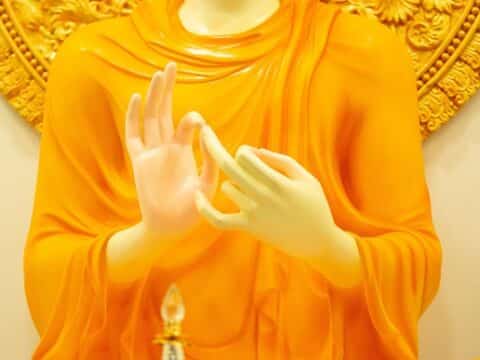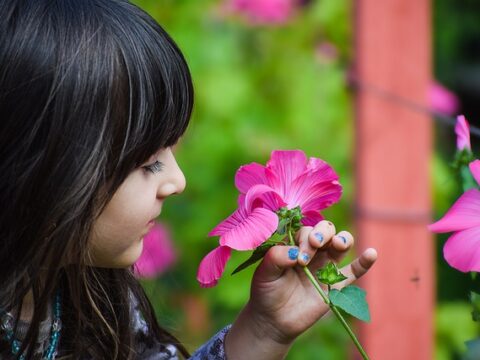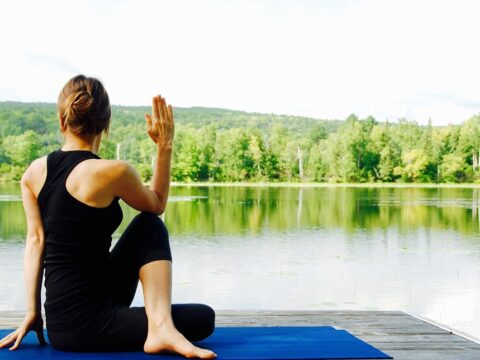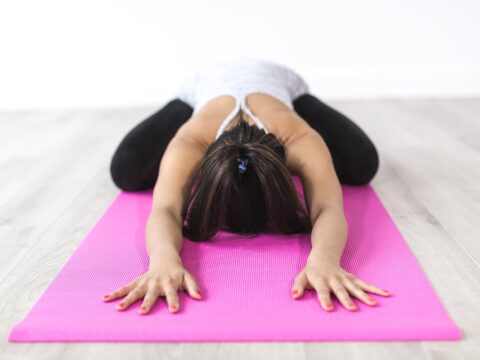This article is intended to be a small guide to distinguish between the different styles of yoga. Yoga is where mind and body come together. Whether at home or in a yoga studio, yoga can become a central part of your fitness program. Yoga can help improve flexibility and strength while lowering stress levels.
Each type of yoga has its own challenges and health benefits. With this guide, it will be easier to find the right yoga class.
Podcast
Power Yoga – Vinyasa Yoga with a Twist
Power yoga is a type of energetic vinyasa style yoga. It developed in the 1990s in the United States. It is based on many different styles, including Ashtanga Vinyasa Yoga, the Bryan Kest style, and the Larry Schultz style of Bikram Yoga. It is more challenging than traditional yoga and the emphasis is on strength and concentration.
Power yoga postures are challenging and often require a high level of endurance. These postures improve your stamina and flexibility and are especially useful for people who have difficulty performing normal physical activities.
While some power yoga postures require great physical strength and endurance, others are accessible to any fitness level. For example, if you are a complete beginner, downward dog is a good option.
Power yoga can be especially helpful for people who suffer from anxiety or depression. Researchers have found that regular power yoga sessions can lower cortisol levels, an important hormone that promotes stress.
Research has also found that power yoga can help people quit smoking. Participants also reported a decrease in anxiety and improved health.
Power yoga classes are intense and can last between 60 and 90 minutes. These classes can increase heart rate and breathing, so people who are new to fitness or have an underlying condition should discuss their health with a doctor before starting any new exercises.
Beginners can also start with a lower intensity yoga class such as Hatha yoga. This style of yoga teaches basic poses and proper body alignment.
Deep Meditative Yoga
Deep Meditative Yoga is a meditation technique that teaches you to calm yourself by returning to the moment. You can practice this by focusing on different parts of your body and bringing your mind back to the present.
You can also practice mantras or affirmations. These can help you focus your mind and become aware of the good things in your life. Visualization is also an important mental health practice.
The practice of yoga meditation requires that you learn to access your subconscious mind. By learning to access the waves of the subconscious mind, you can access the creative, intuitive and healing aspects of your being.
Yoga meditation cannot cure all diseases, but it can help you overcome stress and anxiety. If you’ve ever been in a situation that made you anxious or depressed, you know how important it is to get rid of those thoughts.
As with any other meditation technique, practicing Deep Meditative Yoga requires determination and practice. Beginners will inevitably experience distractions and negative thoughts. It is best to accept these thoughts as normal and practice patience.
It is important to be kind to yourself when you experience these moments of concentration and remember that the basic habit of your mind is to seek pleasure and avoid pain.
In the Buddhist tradition, meditation practices are divided into two main categories: Samatha and Vipassana. Samatha means quiet abiding and Vipassana means insight. The first category involves focused attention on the breath. Once the mind is settled, the practitioner can begin to explore the nature of reality. Insight is a deeper state of consciousness.
Yoga with Dogs
Doga, or yoga with dogs, is a growing phenomenon. The practice was first introduced in the United States around 2002 and quickly spread to the United Kingdom and Western Europe. By 2011, it was practiced in many parts of the world. Today, more than 10,000 people practice doga worldwide. Doga was founded by Japanese yogis, has many benefits and is becoming increasingly popular.
The first step in doing dog yoga is to make sure your dog is calm and ready to participate. You can use a quiet room and give your dog gentle pats and light massages to calm him down.
Once the dog is relaxed, begin the session with some breathing and meditation exercises. Dogs are naturally flexible and have an uncanny ability to stay in the present.
If you are practicing yoga with dogs for the first time, you should first consult with your veterinarian. Doga is similar to traditional yoga in that you practice both and are aware of your physical and mental state.
Doga is a great way to connect with your dog. Start with a short meditation or guided relaxation, as both humans and animals pick up on our emotional state.
Doga also includes a series of breathing exercises that are essential to a proper yoga practice. You should begin with a long, slow inhalation through your nose and an exhalation through your mouth.
This relaxes your dog’s muscles and helps with digestive issues. The increased blood flow and movement of your dog’s body muscles will stimulate the bowels.
Invigorating beach yoga
Beach yoga is a wonderful way to enjoy the outdoors and exercise at the same time. Not only is it fun, but it can also be very healthy for your body. It’s also a great way to meet new people and spend time with family and friends.
You can attend yoga classes at a beach resort and listen to the sound of the sea while you exercise. You can also buy DVDs and download online yoga classes to practice at home.
Yoga on the beach can help you feel better overall by improving your balance and posture, sharpening your awareness, and increasing your energy.
It also helps you enjoy the sun and fresh air, which is essential for good health. In addition, beach yoga is an excellent form of exercise to increase your vitamin D levels. You can practice yoga on the beach in almost any weather.
Acro Yoga
Acro yoga is a sport that combines the practices of yoga and acrobatics. It involves group and partner acrobatics, including lifting people into the air. It borrows from the traditions of cheerleading, dance acro and circus arts.
AcroYoga is an intense and fast-growing fitness trend that has spread around the world. The sport is a partnered workout that is popular with Hollywood stars.
Participants perform the poses with a partner, sometimes touching each other to maintain balance. The workout can be difficult and can result in bruises. It’s important to note that AcroYoga is an incredibly versatile sport, and participants have varying skill levels. Newcomers may take months to become familiar with the exercises.
Even though AcroYoga is not for the faint of heart, it has a lot of therapeutic benefits to offer.
Acroyoga not only provides deep relaxation, but also stretches the spine, helps release tension, and promotes a strong sense of responsibility.
When learning Acro Yoga for the first time, the most important thing is to have a positive attitude. Remember that even the most perfectly balanced yogis had to start somewhere!
Stand-Up Paddle Board Yoga
If you want to try SUP yoga, you should know a few basic poses. The first is downward facing dog. You start by placing your right foot in the center of the board and turning your left foot outward. Your knees should be at a 90-degree angle. Next, bend your right knee while keeping your arms straight. You should also pull your tailbone up.
This is the easiest SUP yoga pose for beginners. You can start by crossing your legs in front of you, keeping your back straight and lifting your head.
Once you are in the pose, relax and breathe. This pose stretches the hips and leg muscles and is a good resting position between more challenging poses.
The second pose, called Cobra Pose, helps you stretch your upper and lower body. First, lie on your stomach and place your hands under your shoulders.
Slowly raise your upper body and then extend your arms and bring them toward your body. This pose opens your chest and stretches your back. You can also do this pose while paddling on the water.
Once you have mastered the first few movements, you can move on to more challenging poses. It is best to stick with the easy poses at first, as you will need to get used to the movements of the water.



